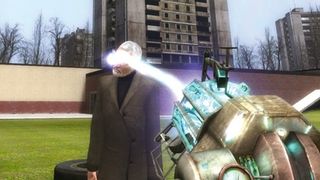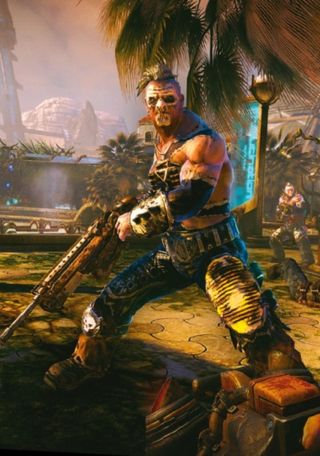How to create your own games
Anyone can be a game developer
The characters, objects and interactive props that inhabit Hammer levels are known as models.
In the original releases of Hammer these didn't include buildings, but later releases term some buildings as models.
There's already a huge library of models in all Valve's games, and they can be viewed using the appropriately titled Model Viewer, included in the Source SDK.
Whereas editing maps in Hammer is fairly straightforward, creating custom models requires external programs – such as 3DS Max – and quite a lot of patience and skill.
The final piece of the Source SDK is the Face Poser, which, as the name suggests, allows you to tweak facial animations and add custom voice-overs.
Half-Life 2 brought facial animations forwards by light years, and it's a surprisingly uncomplicated tool considering the advanced logistics of lip-synching a pretend 3D face.
Face Poser is also used to create skeletal animations, such as walk/run cycles and hilarious falling over motions.
Get daily insight, inspiration and deals in your inbox
Get the hottest deals available in your inbox plus news, reviews, opinion, analysis and more from the TechRadar team.

We're merely scratching the surface of the Source SDK here, and there are thousands more things to consider.
You will run into problems – everything from "Where should that tree go?" to "Why is the level I've spent months working on crashing my computer whenever I load it?" It's all part of the amazing process and steep learning curve that comes with creating your first custom content.
Aside from Source's SDK, there's Skyrim's Creation Kit and Unreal's Unreal Development Kit. Both work differently from the Source SDK because they're creating rather different games and worlds, and it's up to you to decide which best suits your grand vision.
The Unreal Development Kit is in some ways friendlier than the Source SDK, but if you employ it you're basically going to be creating everything from scratch.
The Skyrim Creation Kit is gathering momentum, but it's fairly limited to creating mods and new areas for Bethesda's ubiquitous RPG romp.
The code abode
There is a fly in the ointment of all this, which is coding.
While it's all well and good being able to create levels and maybe even skin a character, if they aren't acting how you want them to you're going to get quite frustrated.
Source games use the universal language of C++ to dictate how the world works, whereas Unreal Engine 3 games use a bespoke language called UnrealScript or as it's often abbreviated, UScript.
UScript was built with ease of use in mind, whereas C++ is used in many different programming environments, and does look very impressive on a CV.
There are further issues to consider when choosing a game engine.
The Source SDK is – in our view – the best way to get started, but aside from authoring tools for specific games, it receives little to no love from Valve and isn't updated that frequently.

The Unreal Development Kit is updated on an almost monthly basis, and there's the added advantage that you won't have to hand over any royalties until your game makes over $50,000.
We'd say that the best approach is to use the Source SDK for getting started and beginning with mods, and then switch to the Unreal Development Kit once you're ready to make your first full game.
The final option here is Unity. This software was created with making 3D games in mind, and a completely free version is available from www.unity3d.com.
The main benefit of Unity is its cross-compatibility – create a game with it and you'll be able to play it on everything from an Android smartphone to a powerful PC.
It's yet to find its killer app, but Unity is gaining traction with games like BattleStar Galactica Online and Tiger Woods PGA TOUR Online.
There is, of course, a more lo-fi approach to making your first game, and one that makes it far more feasible for a single person to bash out a completed product.
Indie gaming has become far more popular in recent years, especially with the rise of the iPhone and casual gaming on sites like Facebook. Thanks to this low-spec hardware, ideas can come before graphical prowess.
"The Source SDK is, in our view, the best way to start"
The tools needed here are far less unwieldy than those required for 3D gaming, too.
Quirky indie point-and-clicker Machinarium was created using little more than PhotoShop, Adobe's Flash and some beautiful hand-drawn artwork.
Bonkers dungeon crawler Spelunky was made with Game Maker, a piece of software that puts ease of use over programming skills.
Whether you choose to get into game design through modding or creating a whole game on your own, there are hundreds of possibilities.
Hopefully we've shown you the best options for each and every type of game you can create, whether it's a complete overhaul for an ageing game or a mere additional teapot prop for your favourite RPG.
- 1
- 2
Current page: How to create your own games: models and coding
Prev Page How to create your own games: where to startMost Popular


